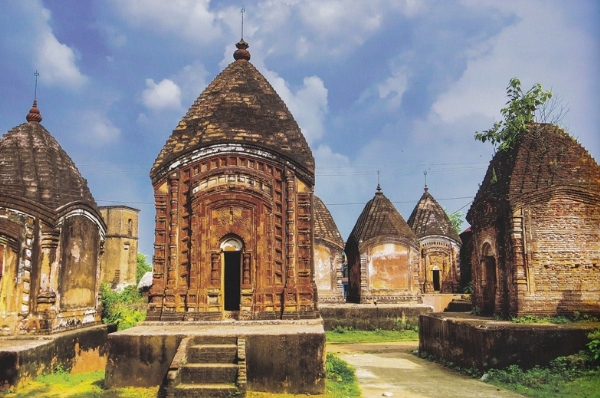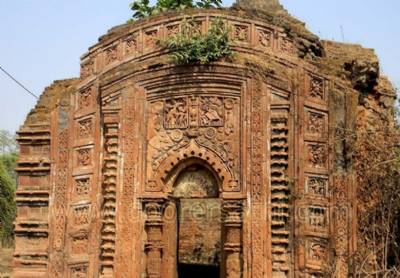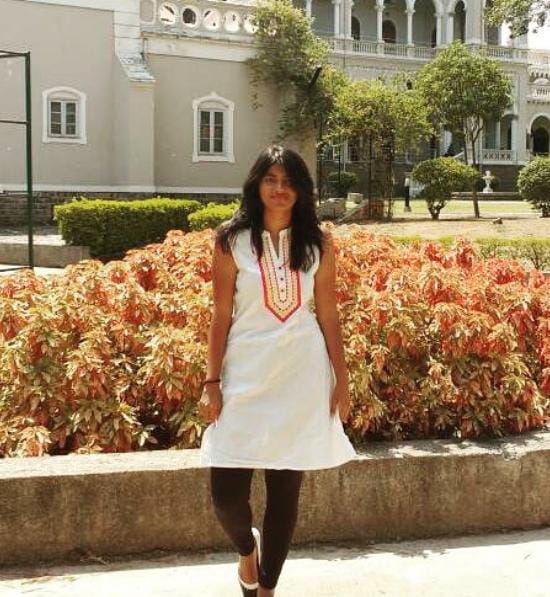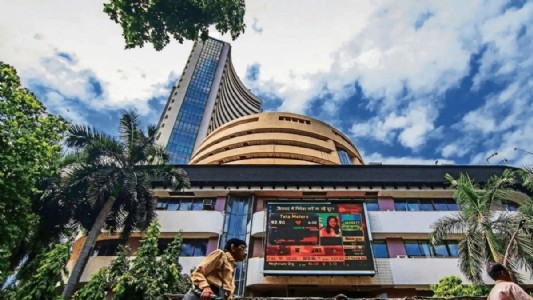Maluti Temples, the terracotta wonder in Jharkhand!
108 temples existed in the temple complex, but only 72 remain now.
Total Views | 215
Maluti, a remote village in Dumka district of Jharkhand, would have most probably remained unknown and nondescript if not for the fact that it is home to an exquisite cluster of terracotta temples dating back to the 17th century. The Maluti temples is one of the most underrated temple complex in India. The entire temple complex has more than 72 terracotta temples!

Did you know that there has been evidence found regarding inhabitation by human beings in Maluti from the Paleolithic age (2.6 million to 10,000 years)? There have been traces of human inhabitation and stone tools by the Chila river in Maluti! So, you can understand not only the temple but the entire town is exceedingly mysterious.

Since the Dumka district borders West Bengal, the influence of Challa architecture of Bengal is evident here. The terracotta temples also have a strong imprint of the Keshta Raya terracotta temple of Bishnupur in Bengal.

Interestingly, 108 temples existed in the temple complex, but only 72 remain now. The terracotta designs on the temples are so breathtakingly beautiful that they helped in making Maluti a historically important place in Jharkhand.
Amongst the 72 temples, the most important one is dedicated to Goddess Mauliksha. You might have never heard about Goddess Mauliksha as we don’t hear the name often in Hindu mythology. The locals of Maluti, worship this Goddess as a form of Goddess Durga. There are other temples located in the Maluti temple complex that is dedicated to well-known deities like Lord Vishnu, Goddess Kali, Lord Shiva, etc.
You will notice that most of the temples here are in ruins. The Global Heritage Fund has declared Maluti one of the world’s 12 most endangered cultural heritage sites! Even though this temple complex was founded by the rulers of the Baj Basanta dynasty, there are many stories related to its history.
Some believe that the temples were built by women of the zamindar family as a status symbol and in a try to outdo each other. The women would not visit a temple built by another woman’s husband and so they built their own. Some inscriptions in the temples show they were also named after women.
Also Read | Durga Temple, the 500-year-old ornate mandir of Banaras
Local legends also say that the temples were built by successors of Raja Baj Basanta of Maluti. Basanta Roy, a Brahmin, was given a zamindari by Sultan Alauddin Hussain Shah (1495–1525) as a reward for safely returning the pet hawk of the sultan’s wife. Roy later came to be known as Raja Baj Basanta as Baj is hawk in Hindi. Devi Mauliksha is the family deity of the Basantas.
Did you know that there has been evidence found regarding inhabitation by human beings in Maluti from the Paleolithic age (2.6 million to 10,000 years)? There have been traces of human inhabitation and stone tools by the Chila river in Maluti! So, you can understand not only the temple but the entire town is exceedingly mysterious.

Where the Maluti temples are located, terracotta work is most prestigious & common. Hence, each of the temples in the complex has Terracotta designs. The clay used for the creation was obtained from the Chila river located there. The temple has almost no stonework. The main reason behind this exclusion is that stones were not readily available in the area. Soon, the family started collapsing, and it became difficult for them to maintain all the temples. That is why right now there are only 72 temples erect over there and not 108.
Also Read | Gwalior’s finely carved historical site, the Sahastrabahu temple!
Maluti came into prominence in 2015 when a Jharkhand tableau featuring terracotta temples won an award at Republic Day parade. The temples garnered interest & also prodded the government to give priority to the restoration work. The Maluti temples are a testimony to India’s vast and rich cultural heritage.
Since the Dumka district borders West Bengal, the influence of Challa architecture of Bengal is evident here. The terracotta temples also have a strong imprint of the Keshta Raya terracotta temple of Bishnupur in Bengal.








